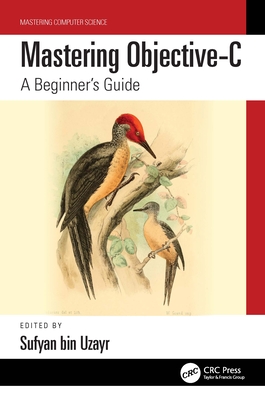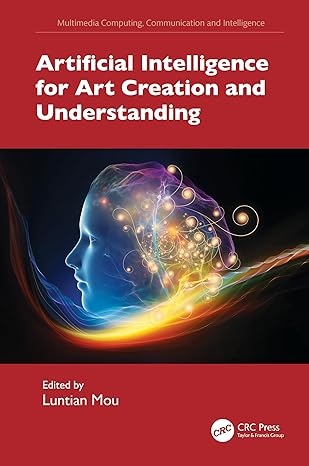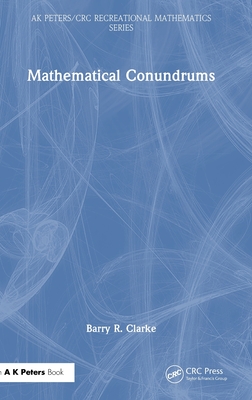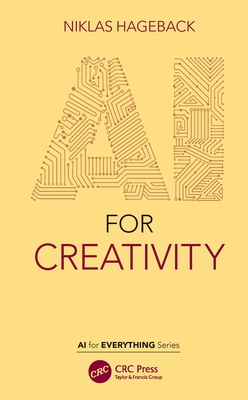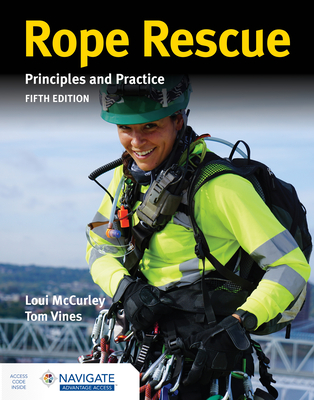图书简介
Fully revised and updated, this third edition addresses key developments in the wind technology since the second edition was published in 2011. Completely new sections on model predictive control; use of estimators for fault detection and fatigue monitoring; active power control; and wind farm control. After a brief introduction, the authors discuss the wind resource. Particular reference is made to wind turbulence due to its importance in wind turbine design. A discussion on the basis of the aerodynamics of horizontal axis wind turbines follows, incorporating general momentum theory and dynamic stall, and an analysis of their performance. The book goes on to assess the requirements for establishing design loads. Burton et al. also set out the various design options for horizontal axis wind turbines, discussing variable speed operation and reviewing alternative blade materials and their properties. They explain the functions of the wind turbine controller and describe some of the possible analysis techniques. The text also reviews the development of wind energy projects with particular emphasis on environmental impact, and considers how wind turbines interact with the electrical power system.
About the Authors Preface to Second Edition Preface to Third Edition Acknowledgements for First Edition Acknowledgements for Second Edition Acknowledgements for Third Edition List of Symbols Figures C1 and C2 - Co-ordinate Systems 1. Introduction 1.1. Historical development of wind energy 1.2. Modern wind turbines 1.3. Scope of the book References Websites Further reading 2. The wind resource 2.1. The nature of the wind 2.2. Geographical variation in the wind resource 2.3. Long-term wind speed variations 2.4. Annual and seasonal variations 2.5. Synoptic and diurnal variations 2.6. Turbulence 2.6.1. The nature of turbulence 2.6.2. The boundary layer 2.6.3. Turbulence intensity 2.6.4. Turbulence spectra 2.6.5. Length scales and other parameters 2.6.6. Asymptotic limits 2.6.7. Cross-spectra and coherence functions 2.6.8. The Mann model of turbulence 2.7. Gust wind speeds 2.8. Extreme wind speeds 2.8.1. Extreme winds in standards 2.9. Wind speed prediction and forecasting 2.9.1. Statistical methods 2.9.2. Meteorological methods 2.9.3. Current methods 2.10. Turbulence in complex terrain References 3. Aerodynamics of horizontal axis wind turbines (title followed by "Author’s note on aerodynamics") 3.1. Introduction 3.2. The actuator disc concept 3.2.1. Simple momentum theory 3.2.2. Power coefficient 3.2.3. The Betz limit 3.2.4. The thrust coefficient 3.3. Rotor disc theory 3.3.1. Wake rotation 3.3.2. Angular momentum theory 3.3.3. Maximum power 3.4. Vortex cylinder model of the actuator disc 3.4.1. Introduction 3.4.2. Vortex cylinder theory 3.4.3. Relationship between bound circulation and the induced velocity 3.4.4. Root vortex 3.4.5. Torque and power 3.4.6. Axial flow field 3.4.7. Tangential flow field 3.4.8. Axial thrust 3.4.9. Radial flow and the general flow field 3.4.10. Further development of the Actuator Model 3.4.11. Conclusions 3.5. Rotor blade theory (blade-element/momentum theory) 3.5.1. Introduction 3.5.2. Blade element theory 3.5.3. The blade-element/momentum (BEM) theory 3.5.4. Determination of rotor torque and power 3.6. Actuator Line Theory, including radial variation 3.7. Breakdown of the momentum theory 3.7.1. Free-stream/wake mixing 3.7.2. Modification of rotor thrust caused by flow separation 3.7.3. Empirical determination of thrust coefficient 3.8. Blade geometry 3.8.1. Introduction 3.8.2. Optimal design for variable speed operation 3.8.3. A simple blade design 3.8.4. Effects of drag on optimal blade design 3.8.5. Optimal blade design for constant speed operation 3.9. The effects of a discrete number of blades 3.9.1. Introduction 3.9.2. Tip-losses 3.9.3. Prandtl’s approximation for the tip-loss factor 3.9.4. Blade root losses 3.9.5. Effect of tip-loss on optimum blade design and power 3.9.6. Incorporation of tip-loss for non-optimal operation 3.9.7. Alternative explanation for tip-loss 3.10. Stall delay 3.11. Calculated results for an actual turbine 3.12. The performance curves 3.12.1. Introduction 3.12.2. The CP performance curve 3.12.3. The effect of solidity on performance 3.12.4. The CQ curve 3.12.5. The CT curve 3.13. Constant rotational speed operation 3.13.1. Introduction 3.13.2. The KP 1/ curve 3.13.3. Stall regulation 3.13.4. Effect of rotational speed change 3.13.5. Effect of blade pitch angle change 3.14. Pitch regulation 3.14.1. Introduction 3.14.2. Pitching to stall 3.14.3. Pitching to feather 3.15. Comparison of measured with theoretical performance 3.16. Variable speed operation 3.17. Estimation of energy capture 3.18. Wind turbine aerofoil design 3.18.1. Introduction 3.18.2. The NREL aerofoils 3.18.3. The Riso aerofoils 3.18.4. The Delft aerofoils 3.18.5. General principles for outboard and inboard blade sections 3.19. Add-ons (including blade modifications independent of the main structure) 3.19.1. Devices to control separation and stalling vortex generators (VGs) 3.19.2. Devices to increase CLmax and Lift/Drag ratio 3.19.3. Circulation control (Jet flaps) 3.20. Aerodynamic noise 3.20.1. Noise sources 3.20.2. Inflow turbulene-induced blade noise 3.20.3. Self-induced blade noise 3.20.4. Interaction between turbulent boundary layers on the blade and the trailing edge 3.20.5. Other blade noise sources 3.20.6. Summary References Websites Further reading Appendix A3 Lift and drag of aerofoils A3.1 Drag A3.2 The boundary layer A3.3 Boundary layer separation A3.4 Laminar and turbulent boundary layers A3.5 Definition of lift and its relationship to circulation A3.6 The stalled aerofoil A3.7 The lift coefficient A3.8 Aerofoil drag characteristics A3.8.1 Symmetric aerofoils A3.8.2k Cambered aerofoils 4. Further aerodynamic topics for wind turbines 4.1. Introduction 4.2. The aerodynamics of turbines in steady yaw 4.2.1. Momentum theory for a turbine rotor in steady yaw 4.2.2. Glauert’s momentum theory for the yawed rotor 4.2.3. Vortex cylinder model of the yawed actuator disc 4.2.4. Flow expansion 4.2.5. Related theories 4.2.6. Wake rotation for a turbine rotor in steady yaw 4.2.7. The blade element theory for a turbine rotor in steady yaw 4.2.8. The blade element - momentum theory for a rotor in steady yaw 4.2.9. Calculated values of induced velocity 4.2.10. Blade forces for a rotor in steady yaw 4.2.11. Yawing and tilting moments in steady yaw 4.3. The circular wing/rotor model 4.3.1. Introduction 4.3.2. The general pressure distribution theory of Kinner 4.3.3. The axi-symmetric pressure distributions 4.3.4. The anti-symmetric pressure distributions 4.3.5. The Pitt and Peters model 4.3.6. The general acceleration potential method 4.3.7. Comparison of methods 4.4. Unsteady flow 4.4.1. Introduction 4.4.2. The acceleration potential method to analysek unsteady flow 4.4.3. Unsteady yawing and tilting moments 4.5. Unsteady aerofoil aerodynamics 4.5.1. Introduction 4.5.2. Aerodynamic forces caused by aerofoil acceleration 4.5.3. The effect of the shed vortex wake on an aerofoil in unsteady flow 4.6. Dynamic stall 4.6.1. Introduction 4.6.2. Dynamic stall models 4.6.2.1. The Leishmann-Beddoes (LB) Model 4.6.2.2. The ONERA model 4.6.2.3. The Gangwani Model 4.7. Computational fluid dynamics 4.7.1. Introduction 4.7.2. Inviscid computational methods 4.7.3. RANS and URANS CFD methods 4.7.4. LES and DES methods 4.7.5. Numerical techniques for CFD 4.7.5.1. Inviscid flow 4.7.5.2. Viscous flow (primitive variable methods) 4.7.6. Methods of approximating the terms in the NS equations over the flow field 4.7.6.1. The Finite Difference (FD) method 4.7.6.2. Finite Volume Method (FVM) 4.7.6.3. Finite Element Method (FEM) 4.7.7. Grid construction 4.7.8. Full Flow Field Simulation including ABL and wind turbines 4.7.8.1. Incident Flow Field (ABL) 4.7.8.2. Large scale wind farm simulation References Bibliography 5. Design loads for horizontal axis wind turbines 5.1. National and international standards 5.1.1. Historical development 5.1.2. IEC 61400-1 5.2. Basis for design loads 5.2.1. Sources of loading 5.2.2. Ultimate loads 5.2.3. Fatigue loads 5.2.4. Partial safety factors 5.2.5. Functions of the control and safety systems 5.3. Turbulence and wakes 5.4. Extreme loads 5.4.1. Operational load cases 5.4.2. Non-operational load cases 5.4.3. Blade/tower clearance 5.4.4. Constrained stochastic simulation of wind gusts 5.5. Fatigue loading 5.5.1. Synthesis of fatigue load spectrum 5.6. Stationary blade loading 5.6.1. Lift and drag coefficients 5.6.2. Critical configuration for different machine types 5.6.3. Dynamic response 5.7. Blade loads during operation 5.7.1. Deterministic and stochastic load components 5.7.2. Deterministic aerodynamic loads 5.7.3. Gravity loads 5.7.4. Deterministic inertia loads 5.7.5. Stochastic aerodynamic loads: analysis in the frequency domain 5.7.6. Stochastic aerodynamic loads: analysis in the time domain 5.7.7. Extreme loads 5.8. Blade dynamic response 5.8.1. Modal analysis 5.8.2. Mode shapes and frequencies 5.8.3. Centrifugal stiffening 5.8.4. Aerodynamic and structural damping 5.8.5. Response to deterministic loads: step-by-step dynamic analysis 5.8.6. Response to stochastic loads 5.8.7. Response to simulated loads 5.8.8. Teeter motion 5.8.9. Tower coupling 5.8.10. Aeroelastic stability 5.9. Blade fatigue stresses 267 5.9.1. Methodology for blade fatigue design 5.9.2. Combination of deterministic and stochastic components 5.9.3. Fatigue prediction in the frequency domain 5.9.4. Wind simulation 5.9.5. Fatigue cycle counting 5.10. Hub and low speed shaft loading 5.10.1. Introduction 5.10.2. Deterministic aerodynamic loads 5.10.3. Stochastic aerodynamic loads 5.10.4. Gravity loading 5.11. Nacelle loading 5.11.1. Loadings from rotor 5.11.2. Nacelle wind loads 5.12. Tower loading 5.12.1. Extreme loads 5.12.2. Dynamic response to extreme loads 5.12.3. Operational loads due to steady wind (deterministic component) 5.12.4. Operational loads due to turbulence (stochastic component) 5.12.5. Dynamic response to operational loads 5.12.6. Fatigue loads and stresses 5.13. Wind turbine dynamic analysis codes 5.14. Extrapolation of extreme loads from simulations 5.14.1. Derivation of empirical cumulative distribution function of global extremes 5.14.2. Fitting an extreme value distribution to the empirical distribution 5.14.3. Comparison of extreme value distributions 5.14.4. Combination of probability distributions 5.14.5. Extrapolation 5.14.6. Fitting probability distribution after aggregation 5.14.7. Local extremes method 5.14.8. Convergence requirements References Appendix 5: Dynamic response of stationary blade in turbulent wind A5.1 Introduction A5.2 Frequency response function A5.2.1 Equation of motion A5.2.2 Frequency response function A5.3 Resonant displacement response ignoring wind variations along the blade A5.3.1 Linearisation of wind loading A5.3.2 First mode displacement response A5.3.3 Background and resonant response A5.4 Effect of across-wind turbulence distribution on resonant displacement response A5.4.1 Formula for normalised co-spectrum A5.5 Resonant root bending moment A5.6 Root bending moment background response A5.7 Peak response A5.8 Bending moments at intermediate blade positions A5.8.1 Background response A5.8.2 Resonant response References 6. Conceptual design of horizontal axis wind turbines 6.1. Introduction 6.2. Rotor diameter 6.2.1. Cost modelling 6.2.2. Simplified cost model for machine size optimisation an illustration 6.2.3. The NREL cost model 6.2.4. The INNWINF.EU Cost Model 6.2.5. Machine size growth 6.2.6. Gravity limitations 6.2.7. Variable diameter rotors 6.3. Machine rating 6.3.1. Simplified cost model for optimising machine rating in relation to diameter 6.3.2. Relationship between optimum rated wind speed and annual mean 6.3.3. Specific power of production machines 6.4. Rotational speed 6.4.1. Ideal relationship between rotational speed and solidity 6.4.2. Influence of rotational speed on blade weight 6.4.3. High-speed rotors 6.4.4. Low induction rotors 6.4.5. Noise constraint on rotational speed 6.4.6. Visual considerations 6.5. Number of blades 6.5.1. Overview 6.5.2. Ideal relationship between number of blades, rotational speed and solidity 6.5.3. Effect of number of blades on optimum CP in the presence of tip loss and drag 6.5.4. Some performance and cost comparisons 6.5.5. Effect of number of blades on loads 6.5.6. Noise constraint on rotational speed 6.5.7. Visual appearance 6.5.8. Single-bladed turbines 6.6. Teetering 6.6.1. Load relief benefits 6.6.2. Limitation of large excursions 6.6.3. Pitch-teeter coupling 6.6.4. Teeter stability on stall-regulated machines 6.7. Power control 6.7.1. Passive stall control 6.7.2. Active pitch control 6.7.3. Passive pitch control 6.7.4. Active stall control 6.7.5. Yaw control 6.8. Braking systems 6.8.1. Independent braking systems: requirements of standards 6.8.2. Aerodynamic brake options 6.8.3. Mechanical brake options 6.8.4. Parking versus idling 6.9. Fixed speed, two speed or variable speed 6.9.1. Fixed speed operation 6.9.2. Two speed operation 6.9.3. Variable slip operation (see also Chapter 8, Section 8.3.8) 6.9.4. Variable speed operation 6.9.5. Generator system architectures 6.9.6. Low speed direct drive generators 6.9.7. Hybrid gearboxes, medium speed generators 6.9.8. Evolution of generator systems 6.10. Other drive trains and generators 6.10.1. Directly connected, fixed speed generators 6.10.2. Innovations to allow the use of directly connected generators 6.10.3. Generator and drive train innovations 6.11. Drive train mounting arrangement options 6.11.1. Low speed shaft mounting 6.11.2. High speed shaft and generator mounting 6.12. Drive train compliance 6.13. Rotor position with respect to tower 6.13.1. Upwind configuration 6.13.2. Downwind configuration 6.14. Tower stiffness 6.14.1. Stochastic thrust loading at blade passing frequency 6.14.2. Tower top moment fluctuations due to blade pitch errors 6.14.3. Tower top moment fluctuations due to rotor mass imbalance 6.14.4. Tower stiffness categories 6.15. Multiple rotor structures 6.15.1. Space frame support structure 6.15.2. Tubular cantilever arm support structure 6.15.3. Vestas four rotor array 6.15.4. Cost comparison based on fundamental scaling rules 6.15.5. Cost comparison based on NREL scaling indices 6.15.6. Discussion 6.16. Augmented flow 6.17. Personnel safety and access issues References 7. Component design 7.1. Blades 7.1.1. Introduction 7.1.2. Aerodynamic design 7.1.3. Practical modifications to optimum aerodynamic design 7.1.4. Structural design criteria 7.1.5. Form of blade structure 7.1.6. Blade materials and properties 7.1.7. Static Properties of glass/polyester and glass/epoxy composites 7.1.8. Fatigue Properties of glass/polyester and glass/epoxy composites 7.1.9. Carbon fibre composites 7.1.10. Properties of wood laminates 7.1.11. Material safety factors 7.1.12. Manufacture of composite blades 7.1.13. Blade loading overview 7.1.14. Simplified fatigue design example 7.1.15. Blade resonance 7.1.16. Design against buckling 7.1.17. Blade root fixings 7.1.18. Blade testing 7.1.19. Leading edge erosion 7.1.20. Bend-twist coupling 7.2. Pitch bearings 7.3. Rotor hub 7.4. Gearbox 7.4.1. Introduction 7.4.2. Variable loading during operation 7.4.3. Drive train dynamics 7.4.4. Braking loads 7.4.5. Effect of variable loading on fatigue design of gear teeth 7.4.6. Effect of variable loading on fatigue design of bearings and shafts 7.4.7. Gear arrangements 7.4.8. Gearbox noise 7.4.9. Integrated gearboxes 7.4.10. Lubrication and cooling 7.4.11. Gearbox efficiency 7.5. Generator 7.5.1. Fixed-speed induction generators 7.5.2. Variable slip induction generators 7.5.3. Variable speed operation 7.5.4. Variable speed operation using a Doubly Fed Induction Generator (DFIG) 7.5.5. Variable speed operation using a Full Power Converter (FPG) 7.6. Mechanical brake 7.6.1. Brake duty 7.6.2. Factors governing brake design 7.6.3. Calculation of brake disc temperature rise 7.6.4. High speed shaft brake design 7.6.5. Two level braking 7.6.6. Low speed shaft brake design 7.7. Nacelle bedplate 7.8. Yaw drive 7.9. Tower 7.9.1. Introduction 7.9.2. Constraints on first mode natural frequency 7.9.3. Steel tubular towers 7.9.4. Steel lattice towers 7.10. Foundations 7.10.1. Slab foundations 7.10.2. Multi-pile foundations 7.10.3. Concrete monopile foundations 7.10.4. Foundations for steel lattice towers 7.10.5. Foundation rotational stiffness References 8. The controller 8.1. Functions of the wind turbine controller 8.1.1. Supervisory control 8.1.2. Closed loop control 8.1.3. The safety system 8.2. Closed loop control: issues and objectives 8.2.1. Pitch control (See also Chapter 3, Section 3.14 and Chapter 6, Section 6.7.2) 8.2.2. Stall control 8.2.3. Generator torque control (see also Chapter 6, Section 6.9 and Chapter 7, Section 7.5) 8.2.4. Yaw control 8.2.5. Influence of the controller on loads 8.2.6. Defining controller objectives 8.2.7. PI and PID controllers 8.3. Closed loop control: general techniques 8.3.1. Control of fixed speed, pitch regulated turbines 8.3.2. Control of variable speed pitch regulated turbines 8.3.3. Pitch control for variable speed turbines 8.3.4. Switching between torque and pitch control 8.3.5. Control of tower vibration 8.3.6. Control of drive train torsional vibration 8.3.7. Variable speed stall regulation 8.3.8. Control of variable slip turbines 8.3.9. Individual pitch control 8.3.10. Multivariable control - decoupling the wind turbine control loops 8.3.11. Two-axis decoupling for individual pitch control 8.3.12. Load reduction with individual pitch control 8.3.13. Individual pitch control implementation 8.3.14. Further extensions to individual pitch control 8.3.15. Commercial use of individual pitch control 8.3.16. Estimation of rotor-average wind speed 8.3.17. LIDAR-assisted control 8.3.18. LIDAR signal processing 8.4. Closed loop control: analytical design methods 8.4.1. Classical design methods 8.4.2. Gain scheduling for pitch controllers 8.4.3. Adding more terms to the controller 8.4.4. Other extensions to classical controllers 8.4.5. Optimal feedback methods 8.4.6. Pros and cons of model-based control methods 8.4.7. Other methods 8.5. Pitch actuators (see also, Chapter 6 Section 6.7.2) 8.6. Control system implementation 8.6.1. Discretisation 8.6.2. Integrator desaturation References 9. Wake effects and wind farm control 9.1. Introduction 9.2. Wake characteristics 9.2.1. Modelling wake effects 9.2.2. Wake turbulence in the IEC standard 9.2.3. CFD models 9.2.4. Simplified or ’engineering’ wake models 9.2.5. Wind farm models 9.3. Active wake control methods 9.3.1. Wake control options 9.3.2. Control objectives 9.3.3. Control design methods for active wake control 9.3.4. Field testing for active wake control 9.4. Wind farm control and the grid system 9.4.1. Curtailment and delta control 9.4.2. Fast frequency response 10. Wind turbine installations and wind farms 10.1. Project development 10.1.1. Initial site selection 10.1.2. Project feasibility assessment 10.1.3. The Measure-Correlate-Predict (MCP) technique 10.1.4. Micrositing 10.1.5. Site investigations 10.1.6. Public consultation 10.1.7. Preparation and submission of the planning application and Environmental Statement 10.1.8. Planning requirements in the UK 10.1.9. Procurement of a wind farm 10.1.10. Financing of wind farms 10.2. Landscape and visual impact assessment 10.2.1. Landscape character assessment 10.2.2. Turbine and wind farm design for minimum visual impact 10.2.3. Assessment of impact 10.2.4. Shadow flicker 10.3. Noise 10.3.1. Terminology and basic concepts 10.3.2. Wind turbine noise 10.3.3. Measurement of wind turbine noise 10.3.4. Prediction and assessment of wind turbine noise 10.3.5. Low frequency noise 10.4. Electromagnetic Interference 10.4.1. Impact of wind turbines on communication systems 10.4.2. Impact of wind turbines on aviation radar 10.5. Ecological assessment 10.5.1. Impact on birds 10.5.2. Impact on bats References Software 11.
Trade Policy 买家须知
- 关于产品:
- ● 正版保障:本网站隶属于中国国际图书贸易集团公司,确保所有图书都是100%正版。
- ● 环保纸张:进口图书大多使用的都是环保轻型张,颜色偏黄,重量比较轻。
- ● 毛边版:即书翻页的地方,故意做成了参差不齐的样子,一般为精装版,更具收藏价值。
关于退换货:- 由于预订产品的特殊性,采购订单正式发订后,买方不得无故取消全部或部分产品的订购。
- 由于进口图书的特殊性,发生以下情况的,请直接拒收货物,由快递返回:
- ● 外包装破损/发错货/少发货/图书外观破损/图书配件不全(例如:光盘等)
并请在工作日通过电话400-008-1110联系我们。
- 签收后,如发生以下情况,请在签收后的5个工作日内联系客服办理退换货:
- ● 缺页/错页/错印/脱线
关于发货时间:- 一般情况下:
- ●【现货】 下单后48小时内由北京(库房)发出快递。
- ●【预订】【预售】下单后国外发货,到货时间预计5-8周左右,店铺默认中通快递,如需顺丰快递邮费到付。
- ● 需要开具发票的客户,发货时间可能在上述基础上再延后1-2个工作日(紧急发票需求,请联系010-68433105/3213);
- ● 如遇其他特殊原因,对发货时间有影响的,我们会第一时间在网站公告,敬请留意。
关于到货时间:- 由于进口图书入境入库后,都是委托第三方快递发货,所以我们只能保证在规定时间内发出,但无法为您保证确切的到货时间。
- ● 主要城市一般2-4天
- ● 偏远地区一般4-7天
关于接听咨询电话的时间:- 010-68433105/3213正常接听咨询电话的时间为:周一至周五上午8:30~下午5:00,周六、日及法定节假日休息,将无法接听来电,敬请谅解。
- 其它时间您也可以通过邮件联系我们:customer@readgo.cn,工作日会优先处理。
关于快递:- ● 已付款订单:主要由中通、宅急送负责派送,订单进度查询请拨打010-68433105/3213。
本书暂无推荐
本书暂无推荐


